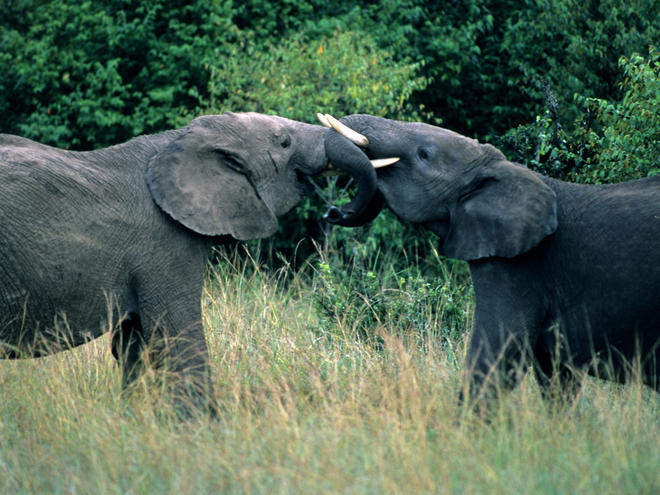Uniting against the illegal ivory trade
Published by the World Wildlife Fund

This World Elephant Day, it’s important to celebrate the positive momentum being taken to save this iconic species. Poaching trends in Africa are down from the peak of 2011, and governments, NGOs and individuals around the globe have made significant strides in 2016 to fight the ivory trade that fuels poaching.
- In May, African leaders gathered to witness the burning of over 100 tons of elephant tusks and rhino horns in Kenya. This symbolic event was meant to draw attention to elephant conservation efforts and the fight against illegal ivory trade.
- One of the most significant global actions taken to date for elephants is now being implemented: a joint commitment by the presidents of the US and China to enact “near complete bans” on the import and export of elephant ivory and domestic ivory trade. In July, new federal ivory regulations went into effect in the US. China, with the world’s largest legal ivory market, announced in June that it would publicly lay out its own timeline for a ban by the end of the year.
- WWF and TRAFFIC launched a major public awareness campaign in early July to persuade Chinese citizens to stop buying ivory as the government prepares to phase out the country’s domestic ivory market. Using social and traditional media, the campaign dissuades people from buying ivory and raises awareness of the link to the slaughter of elephants. People are urged to link their index fingers to show their commitment to protecting elephants and share the message.
- Joining the global movement to shutter ivory markets, Hong Kong leaders announced plans to shut down its legal ivory market within five years. WWF praised the plans, but is calling for a much-faster timetable of two years to end ivory trade there.
Government, market and civil society commitments like these are critical for landscapes like the Selous Game Reserve, Tanzania’s largest protected area and once home to one of the greatest concentrations of elephants in Africa. Due to rampant ivory poaching, the population of elephants in Selous has declined by 90 percent in fewer than 40 years. Nearly 110,000 elephants once roamed the savannahs, wetlands and forests of Selous; now only around 15,000 remain in the reserve.
These global efforts, commitments and campaigns come less than two months before the Convention on International Trade in Endangered Species of Wild Fauna and Flora (CITES) CoP17 in Johannesburg. Two critical reports will be presented during this international meeting revealing that elephants continue to be particularly vulnerable in Central and West Africa despite the slight decrease in poaching rates.
The CITES meeting in September will be a key moment for governments of all 181 parties to discuss elephant conservation. While poaching rates have been inching in the right direction, they are still too high for elephants to begin to recover. One of WWF’s main priorities during this conference will be to focus on the National Ivory Action Plans processes and resolutions that target fundamental drivers of illegal trade such as corruption, lack of enforcement, weak laws, and increased demand in Asia. These plans outline the critical measures, milestones and timeframes that a CITES party commits to deliver in an effort to strengthen the controls of ivory trade and markets, and help combat the illegal trade in ivory.
This global momentum must continue and grow in our fight to save elephants and sustain this global call to stop wildlife crime.
Take action: Help save elephants and stop wildlife crime
Read the full article at: http://feedproxy.google.com/~r/WWFStories/~3/XAJpp59Gvlg/uniting-against-the-illegal-ivory-trade


